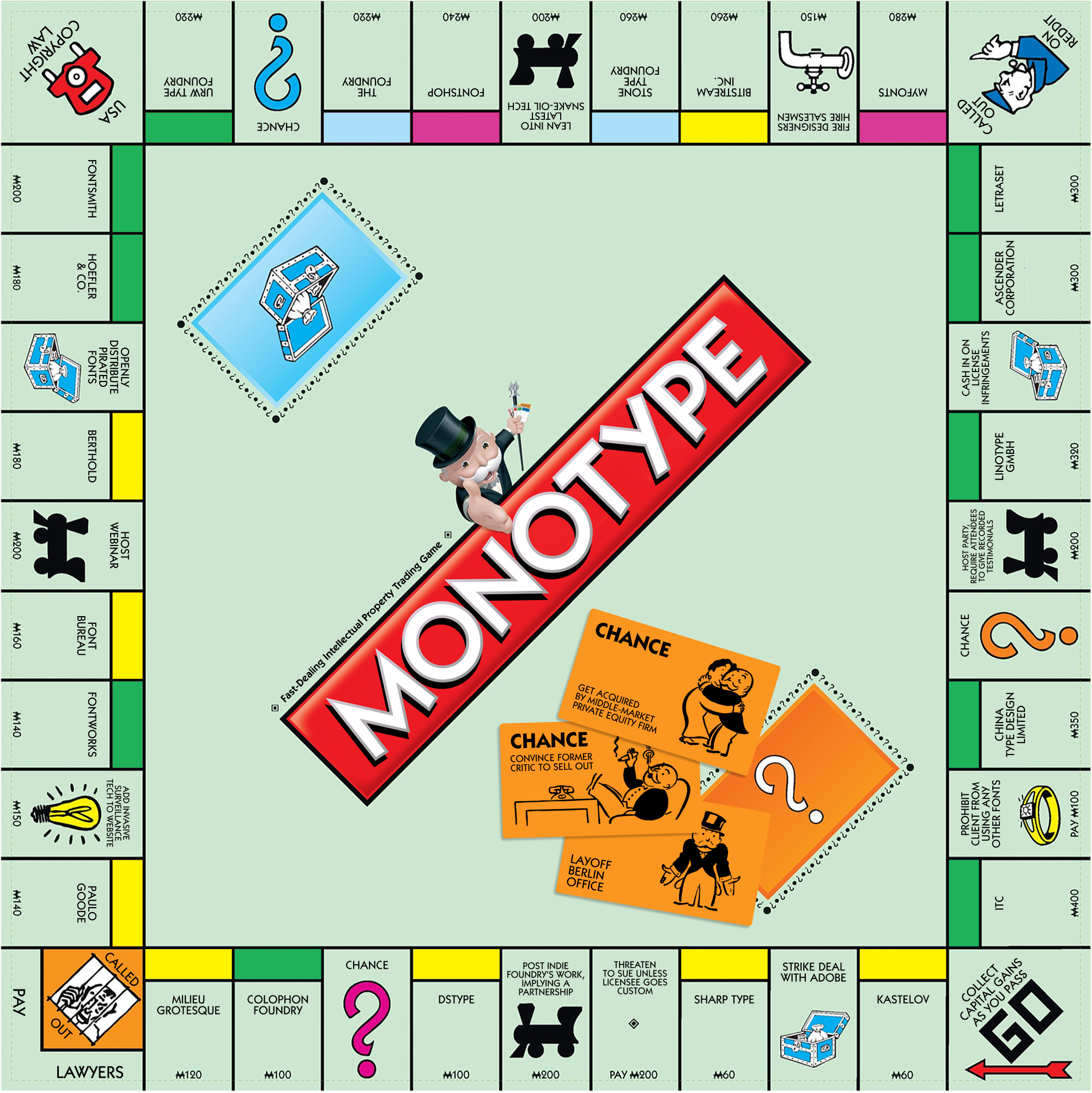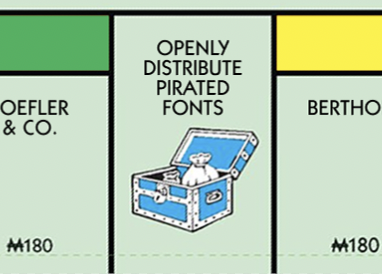Monotype buys Extensis
Comments
-
Ryan Budgen has aptly depicted the acquisitions in his Monotype Monopoly board game
 https://typo.social/@ryan/114993805163683477 4
https://typo.social/@ryan/114993805163683477 4 -
Is there a story behind the “openly distribute pirated fonts” tile?

2 -
There was this: https://typo.social/@klim/114039821045444646
4
Categories
- All Categories
- 46 Introductions
- 3.9K Typeface Design
- 487 Type Design Critiques
- 564 Type Design Software
- 1.1K Type Design Technique & Theory
- 656 Type Business
- 861 Font Technology
- 29 Punchcutting
- 520 Typography
- 119 Type Education
- 324 Type History
- 77 Type Resources
- 112 Lettering and Calligraphy
- 33 Lettering Critiques
- 79 Lettering Technique & Theory
- 558 Announcements
- 94 Events
- 114 Job Postings
- 170 Type Releases
- 179 Miscellaneous News
- 276 About TypeDrawers
- 54 TypeDrawers Announcements
- 120 Suggestions and Bug Reports


